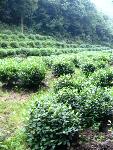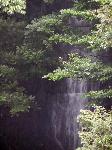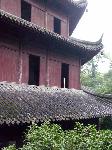- Getting around Lijiang. Dont stay in the Old Towns more than 2 days, there is nothing to do. KRISS Oct 9, 2013 05:46
- 2013 Beijing Temple Fair BENNYLAU Feb 26, 2013 03:29
- Malaysian traveling from KUL - LAX vis Shanghai PVG ZATI_DY Jan 3, 2013 20:15
The Edges of Hangzhou
- Views: 4736
- |Vote: 0 0
- |Add to Favorites
- |Recommend to Friends
The Forest
Hangzhou is possibly one of China’s most charming and inexpressibly attractive cities, situated conveniently close to China’s largest economic hub, the mighty Shanghai. Hangzhou, with its modern city look contrasted neatly against its ancient landscape and old-style Chinese architecture, is a place that delivers a genuinely historical feel as well as the excitement of an international, developed and lively city. I was visiting in the hot weather – the city’s only drawback is that it’s in the direct line of fire of Central China’s blistering summer sun – but with the recent storms of the South, Hangzhou was nicely saturated in a cooling mist that brought a smooth sheen over the entire city – in the glow of the fog, Hangzhou could have been cut out of a Chinese fairytale book.
I was already in one of Hangzhou’s most picturesque districts – the beautiful town of Longjing, where Hangzhou’s famous green tea is produced. I’d been instructed by a friendly local that if I continued walking through the town, I’d find myself in the middle of the tea plantations on Hangzhou’s mountainsides, and that a trail leads through the forest-covered hills towards other, more remote attractions. I’d already become so enamoured of Longjing that I was seriously considering retiring there, and so I continued on through the town until I began to pass the tea fields.
The countryside of Longjing is criss-crossed by trickling brooks, and where they cross the path through the woods, broad stepping stones have been aligned in neat rows across them. Other visitors, I noticed, ignored the stones anyway, especially the women with cool open shoes, preferring instead to feel the crystal clear mountain spring water flow across their toes. Others were sitting by the edge of the stream – some had brought tents to sit inside, others blankets on which to picnic, and tired boyfriends were squatting by the stream’s edge washing fruit in the water for their delighted partners.
The path is wide and well-trodden, but the feeling one gets when strolling through the woods is one of unparalleled peace and natural quiet. The countryside is exceptionally green: tall, broad-leaved trees stand noble in their ranks at the edges of the roadside, and thick grasses and brush line the forest floor. Every so often in sudden, open clearings, rows of tea bush are seperated off from the natural woods by old stone walls, and are tiered up the slopes where in the distance I could see farmers, dressed in colourful light clothes and conical hats, pluck lazily at the buds. The air was richly aromatic in tea and fresh wood, and the light was tinted softly through the mists in the tints of bamboo and willow.
I wandered on, wondering how far the path went, for after about an hour of pleasant reverie, I was still getting deeper and deeper into the forest. I noticed, however, that fellow travellers were increasing in number, and soon I came to a clearing where the river flowed more widely and stone bridges had been set to cross: around here, many local families were enjoying the weekend outdoors, and perhaps a hundred people were seated at picnic tables under the trees. There was an old restaurant just beyond them: I’d seen a photograph of the place in a tourist brochure, meaning I’d already arrived at one of Hangzhou’s most simple and lovely tourist destinations – the waterfall at Jiuxi Yanshu.
Nine Streams and Misty Trees
Jiuxi Yanshu is the general name of the area I’d wandered into all the way from Longjing. The region of Nine Streams and Eighteen Dales is well known by tourists not only as a place to escape the heat, but also as a destination where folk can enjoy the same kind of tree-covered, mist enshrouded countryside that I’d been enjoying on my stroll. This area of rich, wild scenery is contrasted by its still, quiet atmosphere, and as I approached its central attraction, a small park set at the foot of a beautiful waterfall, I noticed that other visitors who had arrived by way of the road access that terminates at the park were merely sitting around staring at the trees soporifically, as if intoxicated by the sweet country air.
Entrace to the park is just two yuan, and as you pass beneath the attractively stylised Chinese gate with deep green accentuated Chinese eaves, you come immediately before the waterfall, which tumbles down its rock face delicately above a wide pond crossed by a quaint bridge of marble. I made my way around the edge of the pond, which itself seemed as still and clear as a deep, dark green mirror reflecting the light of the white sky. The waterfall can be seen up close from the top of the bridge, or by crossing over and walking up a short slope which brings you right in the path of the water’s steady drop. The water speads into a thin veil over the black rock beneath, and as the droplets scatter out from the cliff face they make their own mists to add into the air.
A twenty minute walk along the driveway descending the gradual slope down the mountain leads to the main road that extends along the banks of the Qiantang River, a waterway which also flows through the city of Hangzhou. Having already spent over an hour wandering through the forest, I elected instead to take one of the many unmarked shuttle taxis that congregate around the carpark next to Qixi Yanshu park. The drivers will agree to carry two passengers for five yuan each or ten for one passenger, and it takes about three minutes for them to get to my next destination – the terminus of route K4, the bus that takes passengers right back along the lake’s shore, passing several of Hangzhou’s key attractions along the way. I stepped on the old K4 bus and we set off, the bus jerking its way into the traffic.
The Six Harmonies Pagoda
Three or four stations along, I could already see the iconic multi-tiered tower that stands lofty above the river. The Liu He Ta, or Six Harmonies Pagoda, is the central attraction of Hangzhou’s Culture Park and has stood since 970 AD, lovingly restored on multiple occasions since as early as 1156. From the window of the bus, the tower seemed an unusual mix of the ornate and the simple: whereas many of China’s towers and temples are symphonies of detail, this one, dyed in dull, resilient red and with roughly cut windows, has a Spartan charm that is quite unique.
It was raining already, as it often does in Hangzhou, and so I took shelter in a row of stores at the bottom of the park entranceway. Hangzhou is famous for its fine silks, and I took the opportunity of browsing the racks of silken products as I took shelter. Traditional dresses and shirts, nightwear and scarves were selling at very pleasing prices and in colourful designs – enthusiastic shop assistants happily pulled out item after item to show me as I stood admiring the material and hoping the rain would ease up before I spent the rest of my travel budget.
Unfortunately for the silk merchants, the rain did pass, and I paid the 20RMB entry fee to ascend the stairway up the slope to where the pagoda stood massive and imposing over the river. It was originally put there to control the waters, the design of the tower being thought to bring the forces of the six directions – north, south, east, west, heaven and earth – into balance, and thus calm the waters that were believed to flood when these forces were out of alignment. It was constructed by the local King to demonstrate that his power extended to the elements – although in the park, the statue of a small boy gives another, more appealing version of the story. According to an old legend, Liuhe was the name off a boy whose father was drowned when the river’s resident dragon churned up the waters in violent throes, as was his custom. Vowing revenge, the young boy threw rocks into the water every day to shake the dragon’s palace. The dragon had no choice but to strike a bargain with the stubborn boy that he would never flood the river again.
The park contains several interesting exhibits, including a collection of old bells from the tower; a stele carved in the words of the Emperor Qianlong which is in exceptional condition; the statue of Buddhist monk Zhi Tan whose persistent fundraising activities saw the tower first rebuilt in 1163; and an exhibition of Chinese towers that provides a good overview of the subject.
A ticket to climb the tower is an extra 10RMB, but the view from the top is exhilarating and worth the climb. From the top, the view over scenic and mist-covered Hangzhou is extraordinary, and as I watched the distant train carrying passengers out over the Qiantang River’s elegant rail bridge, I had to ask myself why on Earth they’d want to leave.






 Copyright © 1998-2025 All rights reserved.
Copyright © 1998-2025 All rights reserved.